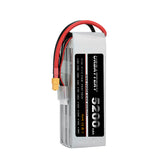Precautions for Charging and Discharging 18650 Lithium-ion Batteries
04 Aug 2025
Precautions for Charging and Discharging 18650 Lithium-ion Batteries
18650 lithium-ion batteries are widely used in power tools, flashlights, e-bikes, and energy storage systems. To ensure safety, optimal performance, and long battery life, it's important to follow proper charging and discharging practices.
Charging Guidelines
- Avoid Overcharging: Do not exceed 4.2V when charging. Overcharging can lead to cell swelling or thermal failure.
- Use a Compatible Charger: Always use a charger with CC/CV (Constant Current/Constant Voltage) functionality, designed for lithium-ion batteries.
- Safe Charging Temperature: Charge only within 0°C to 45°C. Charging outside this range may cause damage or safety hazards.
- Correct Charging Order: Connect the battery first, then plug in the charger to avoid voltage spikes.
Discharging Guidelines
- Avoid Overdischarge: Do not let the voltage drop below 2.5V–2.7V. Overdischarging can permanently damage the cell.
- Prevent Deep Discharge: If the battery drops too low, the protection circuit may fail and the battery may not recharge.
Additional Tips
- Use Protected Cells: Choose batteries with built-in PCB/PCM protection for overcharge, overdischarge, and overcurrent protection.The batteries from urbattery.com are all equipped with built-in PCB (Protection Circuit Board).
- Long-Term Storage: Store batteries at around 3.7–3.8V and check every 3 months if unused.
- Temperature Warnings: Avoid using or storing batteries above 60°C or below -20°C.
- Replace Aging Batteries: After 300–500 charge cycles, battery capacity decreases. Replace cells when performance drops.
Proper care and maintenance are key to safe and efficient use of 18650 lithium-ion batteries.
Tags:



